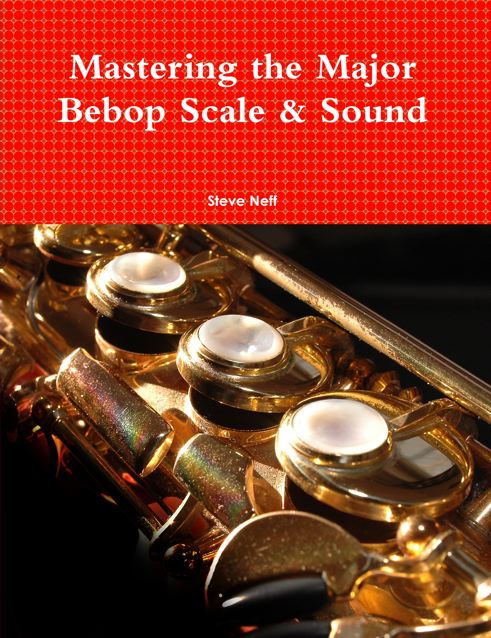Description
In this new video lesson, I give you the inside scoop on my approach to saxophone embouchure. I talk about my journey with different embouchures and when I realized that there was a better way to play my sax in regards to the embouchure. I teach you how this type of embouchure effects your tone, intonation, sub-tone and endurance. I show you first hand how to do it and talk about how to practice this type of embouchure. Lastly, I will be posting a blog article with photos of great players like Dexter, Coltrane, Brecker, as well as many others doing what I believe is exactly what I am teaching in this video.(37 Minute Video Lesson)
*The teachings in this video on playing the saxophone are based on my experience. They are based on my opinions that have been formed over many years of playing the saxophone. I understand that others might approach embouchure, tonguing, voicing and playing the saxophone in a different way entirely and that is ok. This lesson is based off of the approach that I have found to be the best for me and hopefully it will benefit you as well. Steve





Chris Lang (verified owner) –
Hi Steve! I am a long-time virtual student of yours, and have benefited greatly from your lessons. I am a self-taught working pro- I learned jazz from a piano player, so my sax technique came by trial and error. I just wanted to thank you for your detailed embouchure lesson. For all of these years (30+) of playing, I have had 90% of it correct, but NEVER have I heard about “side pressure”. I have always wrestled with intonation issues- not enough to keep from working full-time, but it has always bugged me. Once I tried concentrating on the side pressure, it changed everything. Instantly. Now I have that firm embouchure, and I can apply more or less side pressure to keep my lip consistent. Voila! My intonation is a thousand times better. This is perhaps the best piece of sax intel I have ever heard from you. Thank you so much for taking the time. I appreciate you! God Bless, Chris
Nigel aka Saxpunter (verified owner) –
Hi Steve
I’ve been back playing 13 years or so now and I am at the stage where small changes can still return good results. I’ve always subscribed to the feel loose thing for a lot of reasons including forums and online discussions and because I was biting so bad I had trouble getting palm keys to sound good for years.
Physiology is hard to explain and this results in books not really being able to explain nuance. In this lesson you’ve nailed the one thing that I needed to change in the feeling of sideways pressure and it’s really helped.
Worth every cent of ten bucks, well fifteen Australian but who’s counting.
Qudos to you for taking a pretty hard thing to describe and doing it so clearly.
Simon –
Hi Steve,
Just watched your video…really interesting. I had exactly the same early experience as you, learning sax at school, playing classical and military band. I was taught to put my bottom lip over my teeth and that’s the way I played for years. I had a significant gap in my playing but since coming back to it a few years ago I’ve been experimenting a little bit with lip position, though I didn’t like the sound I was getting initially when rolling the lip out…like you said, you lose control and it sounds ‘quacky’.
The game changer for me has been trying out a different Alto mouthpiece…a Jody Jazz Custom Dark with a large chamber. With this piece rolling my lip out seems to work really well and the sound doesn’t have the same ‘quackiness’. Interestingly if I play this piece with my ‘old’ lip over embouchure it sounds dull and lifeless with no edge. I’m still in the transition stage though, but I really want to move over to a more lip out style as I can already feel that I can play longer without discomfort and the higher notes are more in tune and fuller sounding. Finding the ‘right’ spot for the lip is obviously the trick. I went through Dave Liebman’s ‘Ultimate Guide to Sound Production’ and his embouchure advice is very similar to yours! He also spends some time discussing overtones/harmonics and playing a scale with just the mouthpiece, both of which have also helped a lot with my embouchure. With my old lip over teeth style I would struggle to get any notes out of the mouthpiece alone at all, but with the lip rolled out I can play about half a major scale now. I think this is quite telling in itself!?
Anyway, I enjoyed watching your video and for me I can see that the embouchure you’re describing makes total sense and is the way I will be going from now on…just a quick question, are there any exercises you recommend for strengthening the cheek/side face muscles when away from the sax?
All the best,
Simon.
Steve (verified owner) –
I find myself forming my embouchure even without my sax and blowing focused air quite often. It engages all the same muscles in the face. (I’ve been told whistling is very similar but I can’t whistle so I do not know personally.)
I also talk in my lessons about forming an embouchure like this with a pen in your mouth and to try holding the pen horizontal to the ground. This exercise is tiring after a while but it seems to also engage the same muscles in the face that I use while playing my sax. Hope this helps. Steve
Parry –
Steve, I really appreciate your “best embouchure for tone” video. I was a classical player in early college but jazz since. Playing professionally for 20 yrs or so… I have had my head too high and lip too curled and things never quite felt like I thought they should. I tried it your way! Weird a little at first, but I could tell it is the way to go! More resonance, more flexibility, better subtone etc. I have always noticed Eric Alexander’s head really down. I think Vincent Herring is even lower. They are my favorite players and they always made me wonder about this when I watched them play … Your explanation makes so much sense. Headed your way for more lessons soon. Thanks!!
David –
I can’t wait to buy another lesson, as I’m seeing the benefits from this lesson in my sound already.
Thank you for these amazing resources!
Ricardo Sarandria –
Dear Steve:
I want to know if this video has subtitles in Spanish.
Regards
Ricardo
Steve (verified owner) –
Ricardo, Sorry, the videos are only in English with no subtitles. Steve
Derek Meyer (verified owner) –
This lesson was very helpful for me. I, like many young students, was taught the “classical” embouchure with my lips over my teeth. When I switched to Steve’s recommended embouchure, I immediately noticed a much fuller tone quality. Yes, it’s going to be a long path to gain the muscle memory, but after just few days my old emboucher already feels wrong and stuffy. I appreciate Steve’s teaching style – he is excellent at explaining what he’s doing and why. This episode is not necessarily just for beginners – it’s for anyone looking to improve tone.
Dietmar F. (verified owner) –
Very helpful lesson for me.
I think it will take some time to internalize it.
I wonder if wrong reed strength could lead to a too soft or firm embouchure. What do you think?
Steve (verified owner) –
Yes, for sure. I have had students come in with super hard reeds who are biting the reed closed to make it play easier for them. I have also had students that come in and are playing reeds that are way too soft and they have never learned to blow with a lot of supported air. Steve
David Brown (verified owner) –
Hi Steve,
I recently stumbled onto your website, purchased and downloaded a couple of items, included the Embouchure Lesson.
I’d have to write you a letter to explain how incredibly timely this was for me to receive, but know this:
I picked up my tenor last week after laying it down over 40 years ago because of day job/family responsibilities.
Decided I’d approach this absolutely fresh, i.e., from the beginning, starting with breath work and embouchure.
Was beginning to get the old sore lower lip. Like you, I’d been instructed to cover my lower teeth with it. I began to mess with other options, thinking there must be a better way. Then I saw your lesson.
It was just what I needed at exactly the moment I needed to hear it. I was especially impressed by the photos you included of other players. Dexter Gordon is one of my top favorites, so I searched and found his performance you referenced on youtube and, as I watched it noticed his jaw and lower lip doing exactly what you described. Then I searched for other videos of him performing and was able to see up close profiles of his embouchure, the way he moved his jaw from back to front, the slight tipping of his head slightly up and down as he played and down the register, just as you described.
You may want to also include, as reference, a nearly 2 hour video of him performing on a film called Jazz Icons ‘63-‘64. Multiple minutes that show your embouchure approach in great detail.
Here’s the link: https://youtu.be/EtmKAy9P1kY
Especially, minutes 16:30-18:00, minutes 42-49, and 104-108. The whole tape is well worth the time for Dex fans, but these segments illustrate your points conclusively.
Thanks for sharing your experience and insights.
By far the best ten bucks I’ve ever spent on my music education!
David Brown
Ames, Iowa
Christopher Lutyk (verified owner) –
Hi Steve, this lesson was helpful. I’m a beginner/intermediate alto player and I’m a self taught. Years ago I got the book The Art of Saxophone Playing by Larry Teal and used the lip over the teeth embouchure that’s shown there. Over the past few months I’ve been getting more serious about playing and have come to understand the limitations and drawbacks of such an embouchure, especially for jazz playing (and other modern styles). I’d like to transition to the embouchure that you’ve described and demonstrated in the lesson. However I was hoping you would give some pointers on how to transition to this lip out embouchure. Should I be able to transition using the same mouthpiece and reed strength I’m currently using?
I have a Jody Jazz HR* 6M and I use the #2 green box Java reeds. I feel like the mouthpiece is too open for me (.078) so I use soft reeds. Because of this I’m unsure if transitioning to a completely different embouchure would be advisable in my situation.
Can you point me in the right direction here?
Steve (verified owner) –
Hi Christopher, I don’t see why you couldn’t transition with the mouthpiece and reed you have now. No matter what, at first it is rough because it is new and you will be engaging muscles that you have not used before. They will get tired and sore quickly at first so you will need to take breaks. If you stick with it you get more and more comfortable with it, it will get easier until it is your way of playing.
I use around a .078 myself on alto and I tend to go with 2 1/2 or 3 reeds. The 2 Java seems like a pretty soft reed to me but if it works for you stick with it. When you say the .078 feels too open what do you mean? Why does it feel that way? Good luck! Let me know if you have any questions along the way. Thanks, Steve
Ray Holland –
Hey, I just wanted to say the video lesson is great. I am over half way thru it. I have to tell you I agree with your approach. I have been training with alto sax for a few months and I just could not find the sweet spot. Meaning my spot for embouchure. I was just ripping my inside lips and straining my jaw and face. It was very uncomfortable for me so, I quit. Laid it down for 2 years and picked it back up a few months ago.
To make a long story as short as possible here. I was playing around with the bottom lip one day and found that spot you’re taking about. But I was torn because everybody says no that is not the way you do it. Well I disagree. I looked at your photos and noticed how many of the greats did that bottom lip. I now practice everyday and I am getting the feel of this thing. And I got to tell you that it works great for me.
When I ran across your video. I just had to buy it and hear what you had to say. Glad I found you. I too believe that embouchure is different for people. My mouth is also small and my alignment of jaw may be a little off. So not one embouchure works for all. Glad I got to hear another person confirm what I feel is right for me. And last but not least my sound is in tune and sounding just like I want it to. So Thanks for the video and thank that student for suggesting that you should make this video.
I’m motivated more than ever now!